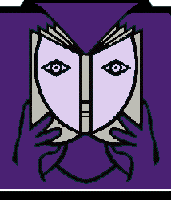



 |



National Library News |
by Katherine Miller-Gatenby,
National and International Programs
Worldwide, there are more than 750 million people with disabilities. As we move towards a highly connected world, it is critical that the Web be usable by anyone, regardless of individual capabilities and disabilities. The W3C is committed to removing accessibility barriers for all people with disabilities -- including the deaf, blind, physically challenged, and cognitive or visually impaired. We plan to work aggressively with government, industry, and community leaders to establish and attain Web accessibility goals.1
This is how Tim Berners-Lee, Director of the World Wide Web Consortium (W3C) and inventor of the Web, announced the creation of the Web Accessibility Initiative (WAI) in April 1997. WAI is an international program committed to removing barriers to full participation in the use of the World Wide Web for persons with disabilities. In the announcement, he stated: "Worldwide, there are more than 750 million people with disabilities.
What are the barriers he refers to?
Web sites may be inaccessible to potential users in a number of ways. Users with disabilities may not be able to see a screen, to hear a sound clip, or to manipulate a mouse or a keyboard. They may have difficulty reading or understanding a text. Some users without disabilities may also find the information on some Web sites inaccessible. They may have a limited understanding of the language used. They may use a text-only browser or be without any sophisticated electronic equipment. They may be in a situation in which they cannot use their hands, eyes or ears to interact in conjunction with the computer. For example, an individual may be in a public kiosk in a noisy shopping centre or at an airport. Some users may have a small screens or slow connections. Any of these conditions can block access to the information on a Web site.
Web site designers can address accessibility in the design of Web pages and Web sites by recognizing that equipment and abilities vary widely. Users may employ different input devices (e.g., voice recognition) and output devices (e.g., a refreshable Braille pad). They may use a keyboard for inputting information and a screen as an output device, but may not have a a sound card in their computers. Developing accessible Web sites requires what the WAI has identified as "graceful transformation" 2 . This means that documents on the sites "remain accessible despite ... physical, sensory, and cognitive disabilities, work constraints, and technological barriers" 3 . It This does NOT mean that Web pages should be "dumbed down" to the lowest common denominator or limited to black text on a white background with no images. Neither does it mean that several versions of the same document must be created. Rather, each document should be designed to ensure that the information is delivered to users in the form that best suits their needs and capabilities. One well-designed document can be rendered in different versions depending on the needs of the users and the technology they use.
For example, the use of images can improve the presentation and clarity of the information in a Web page. However, the information in an image is completely inaccessible to a blind user. Using HTML "alt tags" (i.e., the ALT attribute in the <IMG> tag) to provide a meaningful text alternative for every image supports blind users and others who use text-based browsers, but it does not restrict the page designer's creativity or impede the client who can see and understand information presented in graphics. With the text alternative, the document then can transform gracefully from one user to another, with the information intact.
Creating Web sites and Web pages using the authoring tools currently available is easy. Designing them well is not. The Web is a dynamic, sometimes volatile, environment employing many new techniques and tools. How can Web masters ensure their sites remain accessible, particularly when many authors contribute to the site?
The WAI updated the draft Web Content Accessibility Guidelines and two related documents: Techniques for Web Content Accessibility Guidelines and List of Checkpoints for the Web Content Accessibility Guidelines in February 1999. All three are available on the WAI Web site (at http://www.w3.org/TR/WD-WAI-PAGEAUTH/#toc ). The Government of Canada Internet Guide , third edition, published by the Treasury Board Secretariat has also been updated recently. It has a section on universal accessibility (at: http://canada.gc.ca/programs/guide/3_1_4e.html#2 ). Both of these tools provide useful, easy comprehensible information about accessible Web page design. In addition, the federal government's Internet Advisory Committee has a sub-committee, the Access Working Group, which is in close contact with the WAI and ensures that the Internet Guide is consisteant with the WAI's working groups' activities.
The principles of accessible design are principles of good design. Some are simple. For example, Web pages style and navigation structure should be clear and consistent. Consistency makes the information easier to read and understand. A predictable navigation structure makes the whole site easier to use. Both help to remove accessibility barriers for all people, with or without disabilities.
______
2
Web Content Accessibility Guidelines: W3C Working Draft 26-Feb-1999 World Wide Web Consortium, Web Accessibility Initiative. Massachusetts Institute of Technology, Institut National de Recherche en Informatique et en Automatique, Keio University, 1999. <www.w3.org/TR/WD-WAI-PAGEAUTH/>3
Ibid.